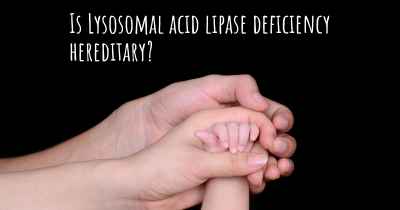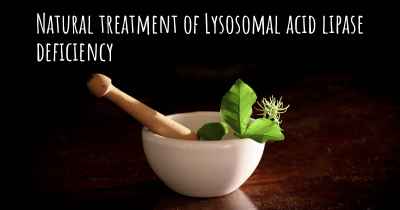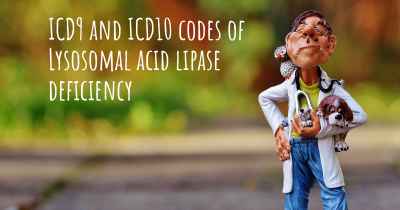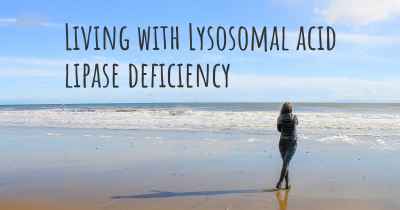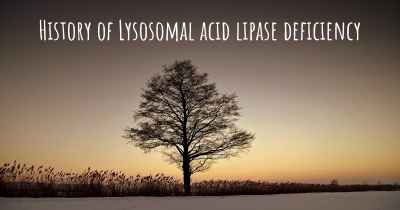What is the life expectancy of someone with Lysosomal acid lipase deficiency?
Life expectancy of people with Lysosomal acid lipase deficiency and recent progresses and researches in Lysosomal acid lipase deficiency
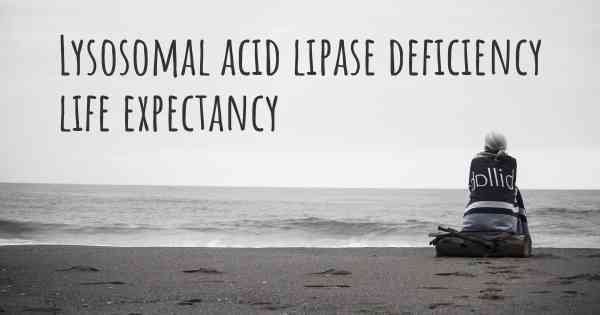
Lysosomal acid lipase deficiency is a rare genetic disorder that affects the breakdown of fats in the body. The severity of the condition can vary widely, and the life expectancy can be significantly impacted. In the most severe form, known as Wolman disease, infants typically do not survive beyond the first year of life. However, in the less severe form, known as cholesteryl ester storage disease, individuals may live into adulthood. It is important to note that the life expectancy can be influenced by various factors, including the age of onset, the presence of complications, and the availability of treatment options. Therefore, it is crucial for individuals with this condition to receive appropriate medical care and management.
Lysosomal acid lipase deficiency (LAL-D) is a rare genetic disorder characterized by the buildup of fats, particularly cholesterol and triglycerides, in various organs and tissues of the body. This condition is caused by mutations in the LIPA gene, which is responsible for producing an enzyme called lysosomal acid lipase (LAL). LAL is essential for breaking down fats within the lysosomes, the cellular compartments responsible for digestion and recycling of various substances.
Without functional LAL, fats accumulate in the lysosomes, leading to the progressive damage and dysfunction of multiple organs, including the liver, spleen, and cardiovascular system. LAL-D can manifest in different forms, including early-onset (infantile) and late-onset (juvenile/adult) forms, with varying degrees of severity.
Early-onset LAL-D typically presents within the first few months of life and is characterized by severe symptoms. Infants with this form of the disease may experience failure to thrive, feeding difficulties, enlarged liver and spleen (hepatosplenomegaly), and progressive liver disease. Without treatment, early-onset LAL-D can rapidly progress and lead to life-threatening complications, such as liver failure and respiratory distress.
Late-onset LAL-D usually manifests during childhood, adolescence, or adulthood. The symptoms may be milder and more variable compared to the early-onset form. Common signs and symptoms include hepatomegaly (enlarged liver), elevated liver enzymes, dyslipidemia (abnormal lipid levels), and liver fibrosis. Some individuals may also develop cardiovascular complications, such as atherosclerosis and cardiovascular disease.
The prognosis and life expectancy of individuals with LAL-D can vary depending on several factors, including the age of onset, disease severity, and the availability of appropriate treatment. Historically, LAL-D was considered a fatal condition, particularly in its early-onset form. However, with recent advancements in diagnosis and treatment, the outlook for individuals with LAL-D has significantly improved.
Enzyme replacement therapy (ERT) has emerged as a promising treatment option for LAL-D. ERT involves the administration of a synthetic version of the missing or deficient enzyme (LAL) to help break down the accumulated fats. Clinical trials and real-world evidence have shown that ERT can effectively reduce liver fat content, improve liver function, and stabilize or reverse disease progression in both early-onset and late-onset LAL-D.
Early initiation of ERT in infants with early-onset LAL-D has shown particularly encouraging results. Studies have demonstrated significant improvements in survival rates and overall outcomes in infants treated with ERT compared to those without treatment. ERT has been shown to prolong survival, prevent or delay the need for liver transplantation, and improve growth and development in affected infants.
For individuals with late-onset LAL-D, the impact of ERT on life expectancy is less well-defined. However, treatment with ERT has been associated with improvements in liver function, reduction in liver fat content, and stabilization of disease progression. These benefits are expected to positively impact the long-term outcomes and potentially extend the life expectancy of individuals with late-onset LAL-D.
It is important to note that while ERT has shown significant promise, it may not completely reverse the disease or address all associated complications. Additional supportive measures, such as dietary modifications, management of cardiovascular risk factors, and regular monitoring of liver function, are often recommended to optimize outcomes and improve quality of life.
In conclusion, the life expectancy of individuals with Lysosomal acid lipase deficiency (LAL-D) has significantly improved with the advent of enzyme replacement therapy (ERT). Early initiation of ERT in infants with early-onset LAL-D has shown particularly promising results, with improved survival rates and overall outcomes. For individuals with late-onset LAL-D, the impact of ERT on life expectancy is less well-defined, but treatment has been associated with improvements in liver function and disease stabilization. It is crucial for individuals with LAL-D to receive appropriate diagnosis, early intervention, and ongoing management to optimize outcomes and improve their quality of life.

